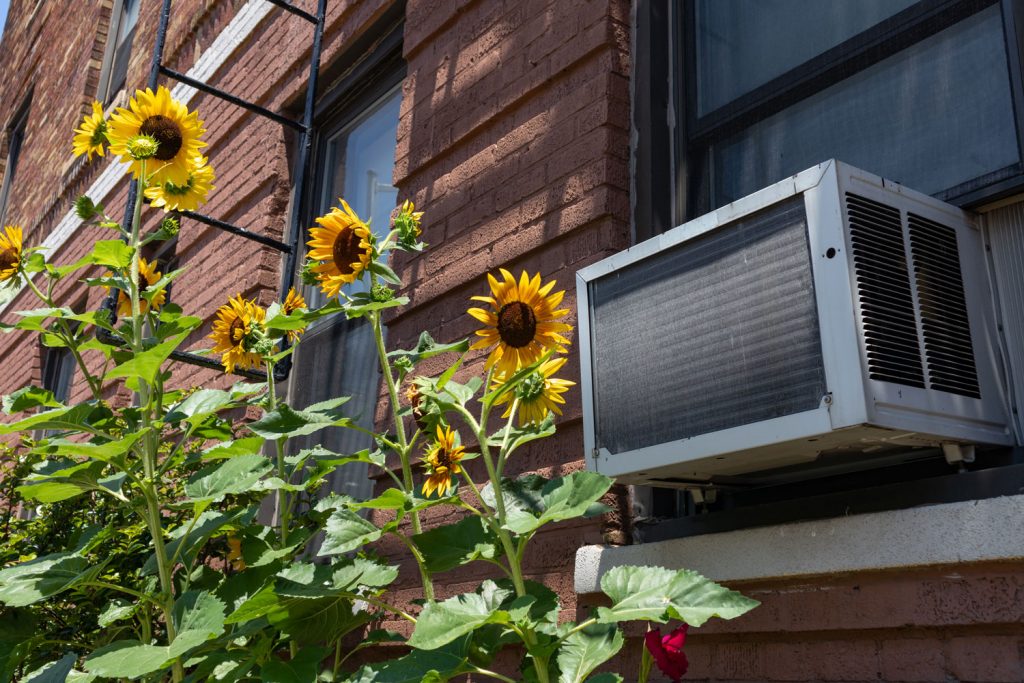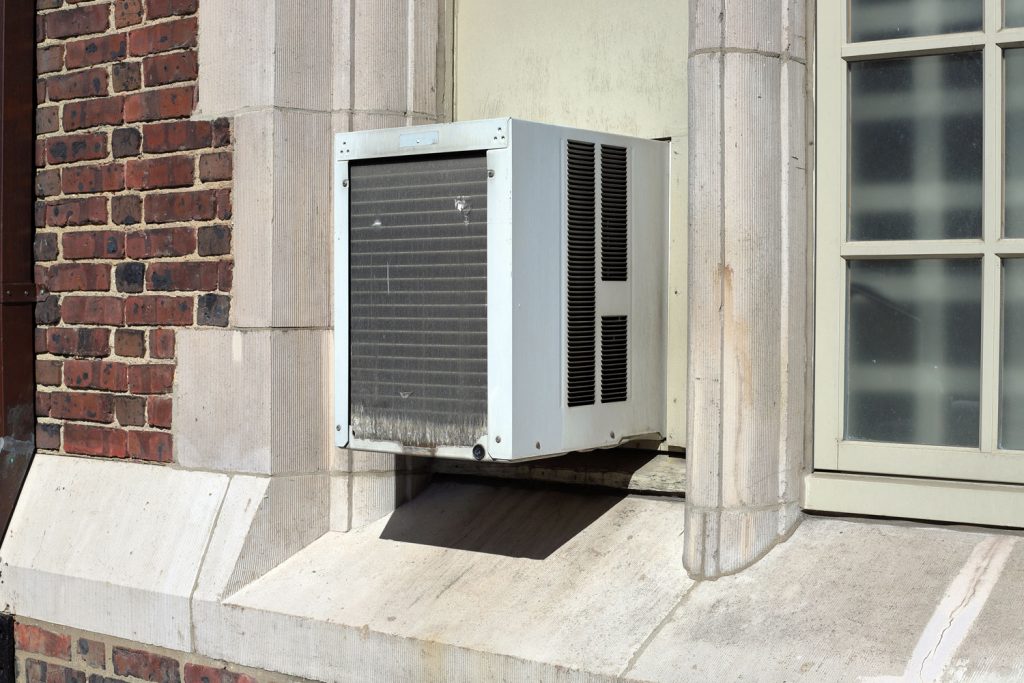A window air conditioner helps disperse and cleanse the air, reducing your exposure to indoor pollutants. Although advanced technology in making these air conditioners has done away with the need for a drain plug, most older models still have one. If your window AC has a drain plug, you may be wondering if you should remove it. We have done the research and shared our findings.
Ideally, you should not remove the drain plug from a window air conditioner. The plug is intended to be removed only for draining water to prepare the unit for storage, typically done by a technician. It can also be used as a method to channel water away from the unit.
Now that you are aware that you should not remove the drain plug from the window AC, you may also be interested in finding out how a window AC operates, how you can help the AC drain better, or even how to take care of your AC, so it serves you efficiently. Dive in as we will discuss all there here.

How the window air conditioner operates
A window AC eliminates heat and moisture from a room while cooling the air to release into the room. It is fitted with a thermostat that can be preset to turn on the fan if the temperatures in the room exceed pre-determined levels.
The fan creates proper air circulation. It sucks room air into the unit and runs it through the cold refrigerant coils to cool it. The air is then dispersed into the room, lowering the temperature in the room. Once the temperatures fall to an acceptable level, the thermostat switches the fan off.

Air drawn into the AC contains moisture. As this air courses over the condenser coils, moisture condenses and collects in the pan as water droplets. If the condensate is left to accumulate, it can cause the unit to rust as it drains from the bottom or side. The condensate can also stagnate along the ground beneath the appliance, creating a breeding ground for mosquitos and other insects.
Newer window AC models have a slinger ring installed around the rear fan blade to improve efficiency. As the water accumulates on the pan, the ring propels it towards the condenser coils. The condensate cools the coils, which enhances the AC's efficiency.
In contrast, older models have a drain plug installed below the pan. Typically, this drain plug should not be removed as it is used to drain water from the AC before storage. Additionally, you can use it to channel water away from the unit and direct it to a kitchen garden for irrigation. Furthermore, a technician would use the drain plug to remove water from the device.
You must pick the right size of AC for your space as this would greatly influence its efficiency. If the unit is too small, it would need to overwork to reach the set room temperature. This may result in frequent breakdowns and expensive repair costs. However, if the appliance is too big, although it would cool the room fast, it would not be as effective in eliminating humidity.
Best practices for proper window air conditioner draining

Your AC's make and model will determine how you can set it up in the best way possible to enable draining. It is advisable to set up air conditioners with a drain plug at a slight angle to allow the appliance to drain towards its rear since draining depends on gravity.
To enable your AC drain well:
- Disconnect the AC from the power source and ensure that it is secure.
- Use a carpenter's level to examine whether the appliance is leveled or slightly slanted toward the ground outside. For appliances with a drain plug, it is recommended that the rear of the unit be one inch lower than its front.
- Adjust the appliance's angle as required to enable good drainage.
- Locate the drain plug designed to eliminate excess water. Generally, the hole in models with a drain plug is located below the unit's exterior and may be very minute. In models with an overflow drain instead, the hole is on the side so the water can drain when it reaches a certain level. You can consult your appliance's manual to determine where the hole is situated.
- Clear any clogs on the mouth of the hole.
- Clean the AC. Keep reading as we will discuss how to clean the window AC.
- Allow the AC to dry completely before running it. It is advisable not to operate it for at least two days to allow everything to dry completely.
Read more here: "Should A Window Air Conditioner Be Tilted?"
Maintenance for a window air conditioner

A little TLC will keep your appliance operating efficiently, thus saving you costs on energy bills. It is advisable to perform these tasks regularly to ensure your appliance is in good working condition for longer.
Clean the filter
The filter in your AC ensures that a sufficient amount of room air circulates over the evaporator coil, preventing its freezing up. Therefore, maintaining a clean filter is critical for the efficient operation of the window AC.
It is recommended that you wash the filters regularly. Clean the re-usable filter every four to six weeks whenever your AC operates. This will help you save energy and improve indoor air quality in your home, thus reducing respiratory infections from inhaling pollutants.
To wash the filter:
- Soak the filter in warm, soapy water.
- Rinse off the grime.
- Allow the filter to dry.
- Re-install in the window AC.
Wash the fins
The coils in your window AC are covered with delicate aluminum fins that enhance the coils' ability to capture and release heat. Because the air drawn into the AC contains pollutants like pollen, dust particles, and hair, dirt will accumulate on the fins over time. If left unattended, the grime will cause your AC to be thoroughly inefficient.
To clean the fins, and the rest of the AC's internal parts, uninstall the AC from the window sill and place it on a clean surface.
- Remove the screws from the chassis and place them in a secure place.
- Form a mixture of water and a few drops of dish detergent in a spray bottle.
- Spray the solution on the fins and leave it for a few minutes.
- Gently loosen the grime with a soft, bristle brush. Ensure that you move the brush along the fan's grain.
- Use a hose to rinse out the dirt. It is recommended that you gently spray the water from the inside out.
Straighten bent fins
The fins need to stay in position for them to handle heat efficiently. If the fins are bent or touching each other, your AC will be very inefficient.
It is judicious to use a fin comb to straighten bent fins. The fin comb has teeth that match the spacing of your AC's fins. Therefore, it can straighten and separate multiple fins with each pass. You can also use an expired credit card to straighten bent fins, though you would have to separate one fin at a time.
- Insert the fin comb or expired credit card where the fins are not bent.
- Run your tool of choice down the gap until you pass through the bent section.
- Repeat the procedure until the fans are back to their original position.
Wash the fans
The window AC has two fans; one near the condenser and another near the evaporator. As previously mentioned, the fan creates true air circulation by pulling warm air from the room and dispersing the cool air generated from the operation of the window air conditioner.
Dirt reduces the ability of the blades to spin efficiently. Consequently, the fan will not meet your home's airflow demand. Furthermore, the fan may also consume more energy to compensate for its inefficient performance.
- Use the same detergent solution you used to clean the fins to wash the fans.
- Gently scrub off the grime off the fans and the surrounding surfaces.
- Use a hose to rinse off the dirt.
Clean the drain pan
The drain pan collects the condensate that trickles off the coils. The drain pan should be kept clean to avoid condensate backing up if the drain plug is blocked.
- Channel dirty water accumulated on the drain pan through the drain plug.
- Use a long, thin wire to poke through the hole and remove debris.
- Scrub the pan with a rag to remove grime.
- Rinse off the dirt using water from the hose.
Clean the coils
The evaporator coil absorbs heat from the air inside your home. In contrast, the condenser coil takes the heat and releases it outside.
The coils must stay clean for them to function as expected. Because these coils are delicate and can be expensive to replace, you should take care not to damage them when cleaning.

Run water from the hose through the coils to clean them. However, if debris has accumulated over a long time, you should hire a professional to clean the coils. Utilizing a professional will help you avoid bending or breaking the coils and save you money that you could otherwise use on repair costs.
Final Thoughts

Keeping your window AC in good working condition is crucial to conserve energy and save on energy bills. For ACs with a drain plug, the drain plug should not be removed as this would alter the unit's efficiency.
Storing the AC in a dry place free from dust during the offseason is necessary to enable your unit to last longer and perform better. Find out more by reading this article: "Can You Leave A Window Air Conditioner On 24/7?"
